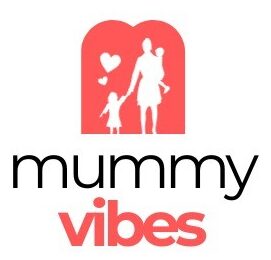
Working Moms Here’s How FMLA Protects Your Job When Family Needs You Most
Working moms carry a load that few people see. You balance work, kids, meals, school events, late nights, early mornings, and every surprise life throws your way. When a child gets sick, when a parent needs help, or when your own body needs rest, everything else pauses. But work does not always feel like it can pause with you. This is where the Family and Medical Leave Act becomes one of your strongest protections.
FMLA exists so working moms can step away from work during big family moments without fear of losing their job. It gives you time, space, and security when life gets real. If you have ever worried about taking time off for your family, this guide breaks down how FMLA protects you and how to use it with confidence.
Make the process easier with the right support
Many working moms feel unsure about paperwork, rules, and what their job needs from them. The fear of doing something wrong can make the whole process stressful. A lot of moms now choose to use an online fmla doctor to help complete their medical certification forms. This makes the process fast and simple so you can stay home with your family instead of sitting in a clinic. It also keeps things clear for HR and gives you peace of mind during a time when your focus is already stretched thin.
First, understand what FMLA gives working moms
FMLA offers up to twelve weeks of job protected leave. This does not mean paid leave, but it does mean your job must be there when you return. Your health benefits stay active too. For working moms, this time can be used for many needs:
- Caring for a sick child
- Caring for a newborn or adopted child
- Caring for a spouse or parent
- Recovering from childbirth
- Handling medical complications
- Addressing mental health needs
FMLA is designed to protect your job while you protect your family. And for many moms, this law becomes a lifeline during stressful seasons.
Know if you qualify before you apply
To use FMLA, you must meet these conditions:
- You must work for a covered employer
- You must have worked for that employer for at least twelve months
- You must have worked at least one thousand two hundred and fifty hours in the past year
- Your employer must have at least fifty employees nearby
If you are not sure whether you qualify, you can check your employee handbook or talk to HR. Many working moms find they qualify without even realizing it.
Tell your employer early when possible
Life with kids can be unpredictable. Illness can happen overnight. Accidents can happen in seconds. But when you know ahead of time that you will need leave, try to let your employer know early. A simple message works well:
“I will need to take leave under FMLA to care for a family member. I will turn in the forms as soon as they are complete.”
You do not need long explanations. You do not need to share private medical details. A short message is enough.
What FMLA covers for working moms
FMLA covers more than many moms expect. Here are the common reasons moms use it:
Care for a sick child
Kids get sick. It happens often. When your child needs real care, FMLA protects your job while you stay home.
Care for a newborn or adopted baby
Bonding, feeding, healing, and adjusting all take time. FMLA gives you that time.
Care for a spouse or parent
Many moms care for aging parents or a partner who is recovering. FMLA covers this too.
Mental health needs
Stress, anxiety, and burnout are real. FMLA covers mental health just like physical health when documented by a provider.
Pregnancy and postpartum recovery
Your body does major healing after childbirth. FMLA gives you space to recover.
Serious health conditions
If you face medical complications, FMLA protects your leave and your job.
These protections help moms care for both family and themselves.
You can take leave in different ways
FMLA does not have to be used all at once. You can use it in the way that fits your life:
- In one long block
- In smaller blocks
- In short periods as needed
- In a reduced schedule when medically required
This flexibility helps moms handle sudden needs without losing their footing at work.
What to expect with the medical forms
Every FMLA leave request needs medical certification. This form is simple, and it does not reveal private details. It confirms:
- The reason for leave
- The expected length
- Whether leave is needed all at once or in parts
Your employer cannot ask for more than what the law allows. Once the form is submitted, your employer must respond within a set time.
If anything is unclear or a date changes, you can update the form.
How FMLA protects you at work
FMLA protects your job in several ways:
Your job must be held
Your employer cannot fire you for taking approved FMLA leave.
Your health insurance stays active
Your benefits continue as if you were still at work.
You cannot be punished for using it
Your employer cannot lower your hours, your pay, your position, or your status because you used FMLA.
You must return to the same or equal job
They cannot put you in a lesser role. The law protects you from that.
FMLA is built to keep moms safe from workplace backlash.
How to set yourself up for a smooth leave
You can make the process easier with a few steps:
- Turn in your forms early
- Keep copies of everything
- Let your manager know how to reach you in emergencies
- Set up childcare plans if needed
- Create a simple list of tasks to hand off
These small steps lower stress and help your team while you are away.
Life during FMLA leave
FMLA leave is often emotional for moms. You may feel relief, tiredness, fear, hope, or even guilt. All of these feelings are normal. During this time, focus on what matters most:
- Rest
- Healing
- Bonding
- Care
- Breathing
- Adjusting
Your time is meant for recovery and connection, not pressure or work.
Planning your return to work
When your leave ends, you can make your return easier by:
- Talking with your manager ahead of time
- Exploring flexible schedules if needed
- Planning slow mornings
- Giving yourself grace during the first weeks back
Going back to work after caring for family is a big shift. It is normal to need time to adjust.
Final thoughts
Working moms carry heavy responsibilities, both at home and at work. FMLA gives you the protection you need when family needs you the most. It guards your job, your health, and your peace. When you understand how it works and feel confident using it, you gain control during moments that might otherwise feel overwhelming.
You deserve time to care for your family without fear. You deserve time to rest, heal, and breathe. And FMLA is one of the strongest tools that helps make that possible.
